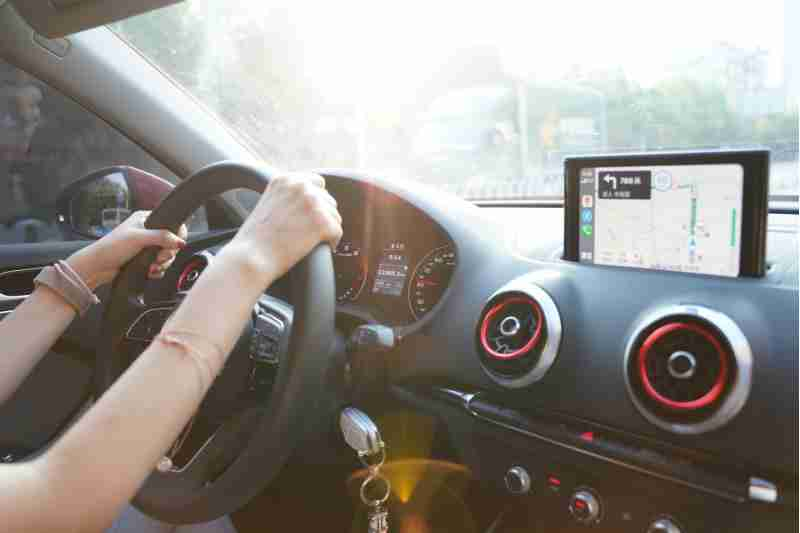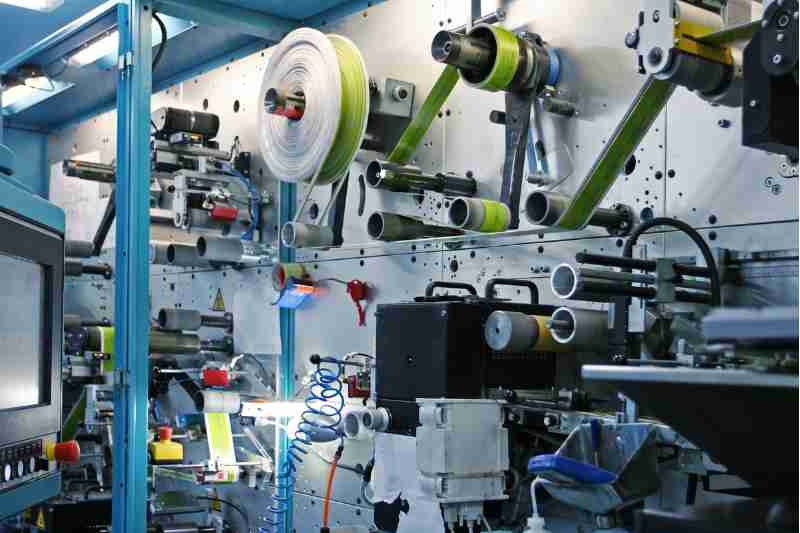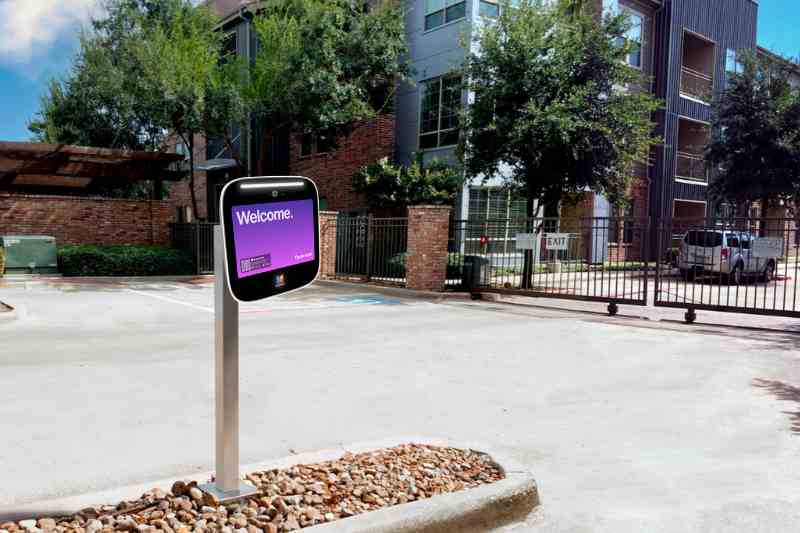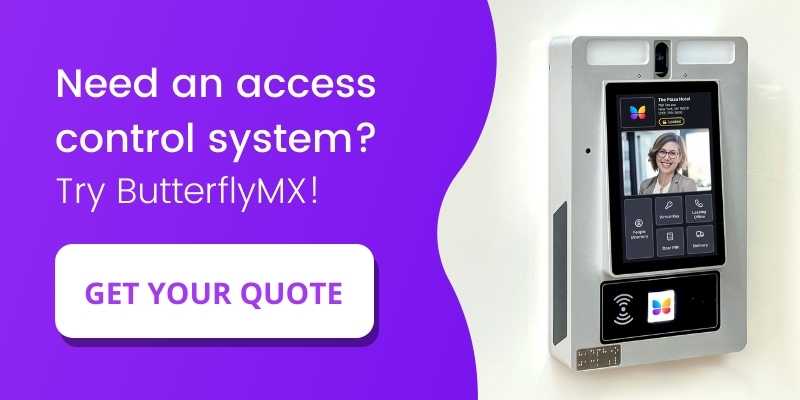Key takeaways:
- A car RFID tag is a small device that allows vehicles to access gated areas by communicating with an RFID reader to automatically open the gate when the tag is detected.
- RFID tags improve vehicle access by offering a hands-free, efficient alternative to manual methods like keypads, fobs, or remote controls — ideal for residents and staff who enter frequently.
- There are different types of RFID tags, including windshield-mounted stickers and license plate tags, each suited for specific environments and security needs.
- Combining RFID tags with a smart access control system, like ButterflyMX, creates a seamless vehicle entry experience while enhancing security and simplifying management for property operators.

Do you manage a gated community where people often drive onto your property? If so, you know that the right vehicle verification system is the difference between smooth vehicle entry and endless traffic jams. So, what’s the best way to control vehicle access on your property? You might consider investing in car RFID tags.
In this post, we explain what car RFID tags are and how they work. Then, we review the pros and cons of using RFID car tags. Finally, we outline the best way to use them.
This post covers:
- What is a car RFID tag?
- How do car RFID tags work?
- Pros and cons of using car RFID tags to manage vehicle access
- The best car RFID tag system
What is a car RFID tag?
A car RFID gate opener sticker is an electronic sticker that drivers can place on their cars and use as a credential to gain access to a gated vehicle entrance. An RFID-powered sensor can wirelessly read these stickers, verify the driver’s identity, and grant access.
RFID tags for cars have several applications. Many features are available depending on the type of RFID tag you buy. And they do much more than identity verification.
For example, car dealerships use more intricate RFID tags that give real-time info on where their cars are. However, for property managers interested in controlling access to a parking lot or gate, standard RFID tags are all you’ll need.
Before the invention of car RFID tags, verifying drivers’ identities before allowing them onto a property was a painstaking task. Tenants had to either exit their cars to unlock the gates themselves or wait around for a parking attendant in a booth to verify their identity. But with the help of wireless technology and automated gate motors, a resident doesn’t even have to leave their car to verify their identity and gain access to a property.
Learn how ButterflyMX controls access to gates and vehicle entrances:
How do car RFID tags work?
Car RFID tags exchange wireless signals with an RFID reader when the reader senses that the tag is in its range.
Car RFID tags are part of a vehicle access control system with these parts:
- Car RFID tag. Residents place the car RFID tag in a visible spot, usually on their windshield.
- RFID sensor. RFID sensors read the tag data and forward it to the control panel for further action.
- Control panel. It’s the sensor’s job to detect whether a tag is in range and read the credential. However, it’s the control panel that actually completes the verification. After the sensor reads the data present on the tag, it forwards that data over to the control panel. Then, it compares that data to its internal database. Staff also use the control panel to make changes to the car tag system, like adding or removing tenants.
All car RFID tags use radio waves to communicate with readers. But you can choose between active and passive RFID access control tags depending on your specific needs.
Active vs. passive car RFID tags
In short, an active RFID tag contains a battery, while a passive tag doesn’t.
The first step in using RFID is establishing a connection between readers and tags using an electromagnetic field. This is true for both active and passive tags.
When using a passive RFID tag, this field powers the tag, allowing it to send the data encoded on it. In contrast, active RFID tags only use this field to detect that a reader is nearby. Then, an active tag uses its in-built battery to wirelessly send information to the reader.
So what does that mean for you? In general, active tags are more expensive because making them is more complicated. But active tags can interact with readers at longer ranges. Meanwhile, passive tags are cheaper, but they only work across shorter distances.

Pros & cons of using car RFID tags to manage vehicle access
Let’s take a closer look at the advantages and disadvantages presented by RFID electronic tags in cars.
Pros of car RFID tags include:
- Simple to use. Other methods of vehicle verification often require a driver to stop their car, roll down their window, and physically scan a credential. This takes a lot of time per car, which can hold up a line and lead to unhappy residents. In contrast, a reader scanning an RFID tag can open a gate quickly and seamlessly. Tenants may not even have to come to a full stop. And with this level of convenience, you can kiss traffic jams goodbye.
- Hard to misplace. Every property manager is familiar with the inconvenience of replacing a resident’s key or fob. However, while a resident might misplace something small like a key, RFID tags are always affixed to a resident’s windshield. This ensures that residents will never spend time looking for their credentials during entry. Additionally, it guarantees that residents will never need to replace a tag because they’ve lost it.
- Helpful for staff. The best car RFID tag systems automatically record the dates and times of each car entry event. Some even record the specific car that entered during that time. Staff can then review this log to increase security on your property.
Cons of car RFID tags may include:
- Risk of wear and tear. How long does an RFID tag last? You’ll have to replace them every three to five years. And while an RFID tag for a car isn’t fragile, there’s always the chance that a resident will accidentally damage their tag, making it unusable. When this happens, residents must have another way to gain access to your property.
- No way to manage access for visitors. You can safely distribute stickers to residents because you’ve verified their identities beforehand. However, giving a windshield sticker to a guest isn’t secure. A guest may be able to use a temporary RFID tag to gain unauthorized access later. Instead of using car RFID tags for visitors, you should depend on another access control method.

The best car RFID tag system
With ButterflyMX, tenants place a sticker on their windshields to gain access.
Remember that while car RFID tag systems offer many benefits for residents, staff, and management, they’re not perfect for controlling visitor access. As a result, the best way to use car RFID tags like ButterflyMX’s vehicle reader is in conjunction with another access control device that manages guest access.
For example, in addition to RFID tags in cars, the ButterflyMX vehicle access control system features an app that tenants can access on their smartphones. This app lets tenants open doors and gates with just one swipe. But tenants don’t have to be on your property to use the app. They’ll be able to open the gate wherever they have an internet connection — which means that letting service providers and delivery couriers onto the property has never been easier.
What’s more, you can pair the vehicle reader with ButterflyMX’s video gate intercom so that visitors can easily request property access from a resident via video call. Then, residents can grant access to any visitor from anywhere in the world.






